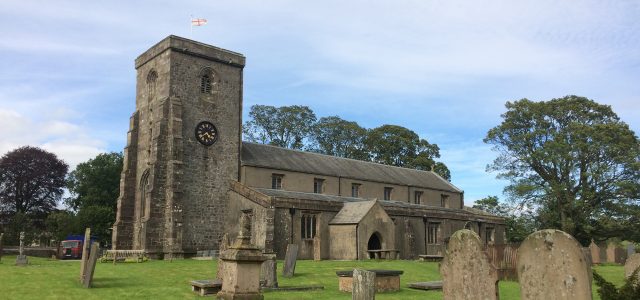
Angel Comes Home
Author Andrew Stachulski tells the fascinating story of an ancient Bowland artefact
Although the Forest of Bowland has long been a recognised term, the name is not so ancient as you might suppose. The clue lies in the word ‘forest’– originally a hunting ground – which speaks of post-Norman Conquest times and the days of large estates granted by the king. Nevertheless, Bowland contains a number of fascinating items of earlier date, and undoubtedly the Angel Stone is one of the most interesting.
There are several versions of the Angel Stone’s discovery. According to Alice Peel’s ‘A History of Slaidburn’, it was found near a wall of Slaidburn Rectory by Dr Jackson, around a century ago, while Jenny Bradley, in her ‘Slaidburn: A Walk through the Village’, records that it was found by the Reverend Jones.
After its discover the stone had a chequered career, eventually being kept at Whalley Abbey until the 1990s when the Reverend Chris Skerry, vicar of Whalley, allowed it to be transferred to the then new Slaidburn Heritage Centre.
The Reverend Skerry and Ben Edwards, then a county archaeologist, held a meeting which featured a strong appeal from the latter, leading to the stone’s return to Slaidburn. Edwards’ son Crispin was at that time in charge of the Heritage Centre, which later became Slaidburn Archive.
Later the Angel Stone was kept at the Pendle Visitor Centre at Barrowford for safekeeping, but now following the upgrading of the Slaidburn Archive building, it has finally come home.
In form, the Angel Stone measures around two feet high by one-and-a-half feet wide, with a vertical taper, and has a maximum depth of eight inches.
Intriguingly, it seems likely that the stone is part of a larger whole, which has been largely lost. An authoritative catalogue, the Corpus of Anglo-Saxon Stone Culture, describes it as part of a shaft. It dates from the late ninth or early tenth century – the Anglo-Scandinavian period. The angelic figure has some interesting features, especially the pair of boots with elevated flaps – similar designs are known on certain Scottish monuments of the same period.
Although St Andrew’s, the parish church of Slaidburn, dates mainly from the 15th century in its present form, there is little doubt that there was an Anglo-Saxon church on the same site. There is compelling evidence from the elevation of the site which bears the present church – Saxons habitually buried their dead on top of previous graves, gradually raising the level of the churchyard in tiers. Inevitably this has led to speculation that other artefacts of similar age might be found. The very name of Slaidburn has Norse origins meaning ‘sheep pasture by the stream’. Though the exact age of the village is difficult to state with confidence, it is extremely likely that a well-defined village existed by 900-1000 AD, consistent with the age of the Angel Stone.
Indeed, why stop in Anglo-Scandinavian times? A Roman road runs barely three miles from the village, taken over in part by the Hornby Road, or Salter Fell track, which some consider may even be pre-Roman.
As to relics, the Angel Stone has some similarities, not least in age, with another stone found at Foulscales, near present-day Newton-in-Bowland, again close to Slaidburn. Finally, in her village guide Jenny Bradley noted the evidence of a Bronze Age burial mound, again in an area near the present churchyard. We keenly anticipate more fascinating discoveries from this corner of Bowland as we strive for an ever-greater connection with the past.
With thanks to Dr Fiona Edmonds, University of Lancaster, and Helen Wallbank of the Slaidburn Archive for their help in sourcing valuable information.
Andrew Stachulski is joint author, with Helen Shaw, of ‘The Forest of Bowland’, published by Merlin Unwin at £14.99

